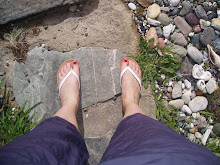Central to issues of sustainability in massage practice are the three main elements of Economic, Social and Environmental Sustainability. A balance of these three lead to a satisfied massage practitioner, a wider positive community/social network and environmental awareness, aiming to positively impact the world on a global scale.
Economic Sustainability
This refers to the ability to make enough money to result in profit and reasonable quality of life for the practitioner, thus affecting the practitioner's mood, and everyone they come into contact with (explored more in social sustainability). The idea of business is that a profit is made, and that the business is not running at a loss, as most likely this is the main source of income for the practitioner, assisting with their survival (food/accomodation) and general expenses. In some ways, being imbalanced in the environmental and social areas of sustainability (buying products that end up being too expensive to realistically make a reasonable profit, e.g. expensive organic cotton sheets) may lead to a need to address this imbalance by purchasing in this case, cheaper sheets which may have been made by slave labour. However, this depends on the views of the practitioner. It is very possible to use and buy products that are both environmentally and socially sustainable, without a massive price tag (e.g. eco-friendly laundry powder, fair trade teas/coffee/sugar). These products may be marginally more expensive, but that entirely depends on whether you make the most of supermarket discounts, sales offers, bulk buys and wholesale prices when ordering these in. In some cases, it is cheaper to buy fair trade/eco-friendly (e.g. trade aid green tea, eco-friendly products that are on special), so it comes back to the intention of the practitioner.
Social Sustainability
This refers to the effect that the massage practitioner and their massage practice has on the wider community network that they contact (via their clients).
The very intention of massage is to improve and maintain people's wellbeing by relaxing & treating them physically, helping them psychologically and generally assisting them on a holistic level. This has the trickle down effect of affecting all other people in that person's network that they contact in some way, usually positively. This as a whole affects society positively, leading to better relationships within the community, greater tolerance of others, lower crime rates and conflict, and more altruistic behaviour.
From a survival point of view, a society with a more functional interpersonal network will have a greater chance of surviving, a higher birth rate, lower premature death rate (due to lower crime levels/conflicts), and be more egalitarian: not have so many issues related to inequality, which can lead to riots and strikes.
In relation to the massage practice, practitioners can actively use their consumer power by choosing to purchase products that support social sustainability locally and overseas, by choosing items that donate a percent of the profit to charity, fair trade items and products, slave-free linens and furniture as a few examples.
The massage practice could also network with grassroots businesses and local organisations that have socially conscious goals to contribute to social sustainability.
Environmental Sustainability
To practice environmental sustainability within a massage business, the easiest ways to address this is by reducing power usage, using environmentally friendly laundry products, recyclable paper and buying recyclable packaging whenever possible, so mainly aiming to reduce throwaway plastic. The therapist can try using small glass bowls for mixing the oil in, for use during the massage rather than plastic bottles (this would be particularly beneficial for practitioners mixing aromatherapy oils prior to the massage) and storing oils in glass bottles.
The massage therapist can look at using soy candles (instead of paraffin which is carcinogenic and adds to air pollution - Rezaei, Wang & Johnson, 2002) during the massage rather than electrical lighting, and switching off lights/appliances when not in use. By using more sheets rather than towels, and line drying linen where possible, this will reduce electricity usage and waste byproducts. Recycling grey water (water that has been used to wash dishes/linen) to use on the garden or potentially in the cistern is another method of conserving water. Again, using the power of active consumer choice, selecting an environmentally friendly power company and advocating for the use of eco-friendly practices and products in the massage industry will have an effect on a wider scale, particularly when networking with a group of like-minded practitioners, in an effort to lobby for positive, sustainable change.
The three spheres of economic, social and environmental sustainability interlink with each other, contributing to sustainable practices and awareness on the part of massage therapy as a whole. The implementation of strategies that address these spheres of sustainability have a beneficial effect at a personal, social and finally global level, reaching far beyond the practitioner and the practice.
References:
Elluminate: Sustainable Practice (23rd September, 2009) Otago Polytechnic Massage Therapy Diploma Course.
My own thoughts.
Rezaei, K., Wang, T. & Johnson, L. (2002) Combustion Characteristics of Candles Made from Hydrogenated Soybean Oil. Journal of the American Oil Chemists' Society, 79 (8).

No comments:
Post a Comment